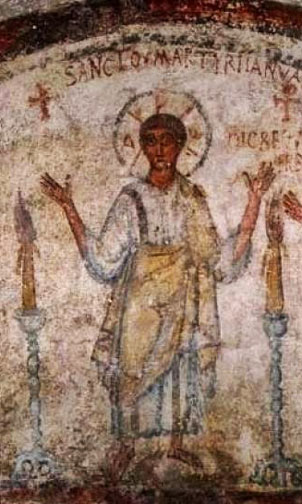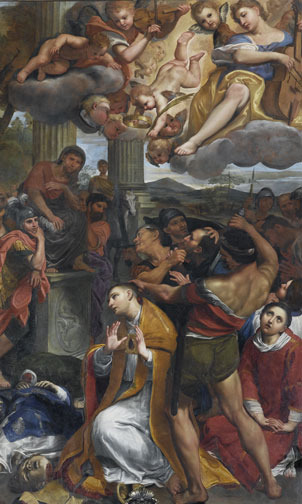Who was St. Januarius? And what is the origin of his cult? His figure has been much embroidered on, to the extent that it has become legendary, but his existence has real historical foundations. In fact he is mentioned in a 6th-century document, Acta Bononiensia, which recounts his martyrdom under Diocletian in 305. Januarius, the Bishop of Benevento, went to Misenum not far from Naples to visit Deacon Sossius who had recently been imprisoned and condemned to death. When Januarius and his companions reached the prison, they too were recognised as Christians and arrested. Since they did not deny their faith, they were condemned to death and beheaded at the Solfatara, an active volcano near Pozzuoli in the Phlegraean Fields.

The saint
Reliquary Bust of San Gennaro

His cult soon caught on and the adoption of the saint by the Neapolitans as their protector happened quickly, to the extent that already in the 5th century, in the catacombs of Capodimonte in fact, St. Januarius is portrayed standing framed by Vesuvius and Mount Somma, uniting the natural and supernatural in an indelible bond which still endures today. The creativity and force of the Neapolitans, many people believe, derive precisely from the under- ground, from the magmatic energy boiling a few kilometres under the surface. It is thus not strange that faith too was germinated in this territory. We need only think of the iconography of St. Januarius, of his story; he was beheaded in an active volcano and his blood comes from there; Eusebia, his nurse, collects it from the ground. In short, his bond with nature is strong and almost generative.



